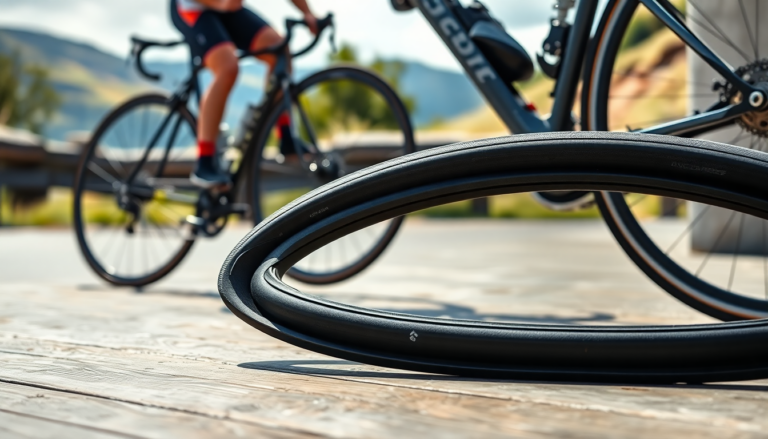Argomenti trattati
Tubular racing tires are a key player in the cycling world, especially for serious competitors and enthusiasts. But what makes them stand out from traditional clincher and tubeless options? When it comes to training, picking the right tire can dramatically influence your riding experience and overall performance. In this guide, we’ll explore the ins and outs of tubular tires, spotlighting their benefits, performance features, and practical considerations every cyclist should know.
The Advantages of Tubular Tires
In cycling, there’s a well-known adage: performance is everything. Tubular tires deliver a unique set of advantages tailored to this principle. Unlike traditional tires, tubulars are designed to be glued to the rim, creating a seamless bond between the tire and wheel. This connection significantly enhances ride quality, providing a smooth feel that many cyclists prefer, especially on tough roads. Have you ever felt the difference between a disconnected ride and one where your tires hug the road? That’s the experience tubulars offer.
Additionally, the construction of tubular tires often leads to lower rolling resistance compared to their clincher counterparts. The incorporation of high-quality materials, like Graphene-infused compounds, not only boosts grip but also extends longevity, making them suitable for various riding conditions. Cyclists can confidently tackle rough roads and debris-laden paths without the constant worry of punctures, thanks to the durable design of these tires.
Weight is another significant factor. Tubular tires are generally lighter than clincher tires, a crucial aspect for performance-driven riders. Every gram counts in racing, and those weight savings can lead to better acceleration and climbing efficiency. Who wouldn’t want that extra edge on race day?
Choosing the Right Tubular Tire for Training
When it comes to selecting a tubular tire for training, careful consideration of various factors is essential. While performance is key, durability during practice sessions cannot be overlooked. Tires like the Rally Tubular are engineered to handle the demands of training while still providing a competitive advantage during races. They strike a balance between cost and performance, ensuring that cyclists don’t have to compromise on quality while managing training expenses.
The cotton casing of the Rally Tubular offers a smooth riding experience, which is vital for those long training rides. This feature, combined with a compound focused on longevity and puncture resistance, makes it an ideal choice for cyclists looking to log significant mileage without the nagging worry of tire failures. Understanding the specific needs of your training regimen can empower you to make informed decisions about which tire to invest in.
Maintenance and Care for Tubular Tires
Maintaining tubular tires is crucial to ensure their longevity and performance. It all starts with proper installation; making sure that the tire is securely glued to the rim helps prevent issues like rolling or separation during rides. Regular inspections for wear and punctures should be part of every cyclist’s routine. While tubular tires can be more resilient to punctures, they are not invincible, especially when faced with harsh training conditions.
If you notice any issues, such as a slight deformation or loss of roundness in the tire, addressing them promptly is essential. A well-maintained tubular tire can be a reliable partner on the road, delivering the performance benefits expected from high-quality cycling gear. Also, consider the terrain you ride on; training over varied surfaces can affect tire wear, and this should factor into your maintenance schedule.
Future Trends in Tubular Tire Technology
The cycling industry is constantly evolving, with innovations in tire technology promising to further enhance performance and durability. Look out for improved compounds that provide better grip in wet conditions and advancements in manufacturing processes that reduce weight without compromising strength. Cyclists can expect to see more choices catering to specific needs, from competitive racing to rugged training terrains.
As the demand for high-performance cycling gear continues to grow, so will the options in the tubular tire market. Staying informed about emerging technologies and materials is essential for cyclists aiming to maintain a competitive edge. Investing in the right tubular tire today could lay the groundwork for future success in both training and competition. Are you ready to elevate your cycling game?

